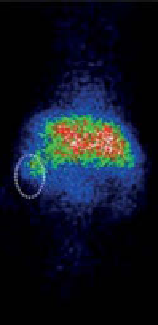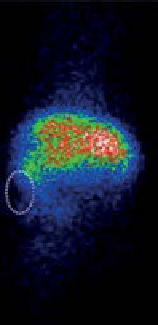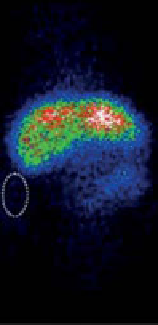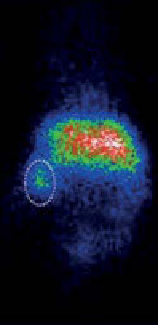Biomedical Engineering Reference
In-Depth Information
2 h
6 h
figure 3.3
Whole-body gamma-images of LLC tumor-bearing mice receiving various
111
in-labeled liposomal preparations (nontargeted long-circulating liposomes (LCLs), plain
LCL; tumor-targeted LCLs modified with tumor-specific monoclonal antibody 2C5 (mAb2C5),
mAb2C5-modified LCL), captured at different times post iV tail vein injection. Tumor is
encircled. (reprinted with kind permission from ref. [101]. © springer science and Business
media.) (
See insert for color representation of the figure.)
.)
successfully used for gamma-imaging, mri, CT imaging, and sonographic imaging
of tumors.
111
in-labeled nanocarriers for tumor imaging (VesCan
®
, Vestar, inc.) are
still progressing in phase ii-iii clinical trials. The results obtained via the utilization
of small unilamellar liposomal nanocarriers (with or without pEg coating) are quite
encouraging; sensitivity of this preparation is up to 82%, and specificity 98% in the
detection of various carcinomas as well as for melanoma, sarcoma, and lymphoma
[97, 98].
111
in nanocarriers were also used for gamma-visualization of human tumor
xenografts in mice [85, 99-101]. it was shown that additional targeting of radiola-
beled liposomes with tumor-specific antibodies results in significantly accelerated
tumor imaging [101] (see fig. 3.3). Clinical data with
111
in-labeled nanocarriers are




Search WWH ::

Custom Search